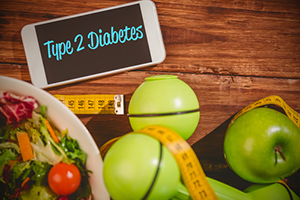 People who already have diabetes have few options to measure both their blood glucose and blood insulin levels accurately, short of visiting a clinic or pharmacy.
People who already have diabetes have few options to measure both their blood glucose and blood insulin levels accurately, short of visiting a clinic or pharmacy.
There are some non-invasive devices, recently commercially available, that measures your glucose from the sweat on your skin. However, these devices measure either glucose or insulin, not both.
But a new non invasive biosensor that may soon become as common as the free, public blood pressure monitors you see everywhere, may change all this. And it could hold the key to curing your type 2 diabetes permanently.
It is important to be able to measure both glucose and insulin, as it tells you how well your body responds to insulin. For example, if both your insulin and glucose are high, your body is obviously resistant to insulin, a chief diabetes symptom.
The difficulty to test both is a problem for both health care providers and diabetes sufferers, especially in developing countries and rural areas where fewer staff are available and the health system might become overloaded.
In response to this problem, Mexican physicians asked some university students to invent a device with which diabetes sufferers can measure their own glucose and insulin. Mexico happens to have one of the highest type 2 diabetes rates in the world, with 14 percent of its population having been diagnosed with it.
The postgraduate students at the National Autonomous University did not disappoint. They are almost halfway through developing a device that can do just that, and have now caught Google’s attention who responded to this worthwhile project by awarding the students with funding for it.
At this stage, not much is known about the operations or appearance of the device, as the students must obviously protect their invention against being replicated. It is a biosensor, which means that it uses biological molecules like sweat or blood to detect the presence of chemicals.
It also places itself squarely in the 21st-century by uploading your data to a central database. This serves two purposes. Your doctor will be able to monitor your condition without having to see you in person, saving both of you time and money. Second, a central database of diabetes statistics will be compiled for scientists to analyze trends.
If you do not yet have diabetes, the process to get diagnosed is currently quite laborious. You must see a physician, who will conduct tests.
The one popular test is a fasting blood sugar test, which requires that you fast overnight, visit your doctor in the morning, and have some blood drawn for a blood glucose test.
Another popular test is an oral glucose tolerance test that also requires that you fast overnight. Your doctor then does a blood test first thing in the morning to test your glucose level. You are then given a sugary liquid to drink, after which your glucose is tested periodically for the next two hours.
If the Mexican device is effective, it will cut through all this testing.
Even better, as many people are prediabetic or mildly diabetic without experiencing any symptoms, it does not cross their minds to consult a doctor for diabetes tests. If the device becomes available in public spaces like pharmacies, for example, it will be so effortless to test for it that many at-risk people will test themselves.
As with most conditions, the sooner you are diagnosed, the better your prospects for overcoming or properly managing the disease. This may reduce the numbers of diabetes deaths, limb amputations, and serious cardiovascular complications.
Devices like this will also make it much easier to heal yourself naturally. Because without having to jump through hoops with your doctor, you can measure the process of your blood sugar improving daily while you make improvements to your lifestyle.

 Overcoming IBD
Overcoming IBD Multiple Sclerosis
Multiple Sclerosis Banishing Bronchitis
Banishing Bronchitis Gum Disease Gone
Gum Disease Gone Overcoming Onychomycosis
Overcoming Onychomycosis Neuropathy No More
Neuropathy No More The Prostate Protocol
The Prostate Protocol Brain Booster
Brain Booster
 Ironbound
Ironbound
 Solution for Shingles
Solution for Shingles
 The Bone Density Solution
The Bone Density Solution
 The Ultimate Healing Protocol
The Ultimate Healing Protocol
 The Parkinson's Protocol
The Parkinson's Protocol
 The Chronic Kidney Disease Solution
The Chronic Kidney Disease Solution
 Overthrowing Anxiety
Overthrowing Anxiety The Fatty Liver Solution
The Fatty Liver Solution The Hypothyroidism Solution
The Hypothyroidism Solution
 The End of Gout
The End of Gout The Blood Pressure Program
The Blood Pressure Program
 The Oxigized Cholesterol Strategy
The Oxigized Cholesterol Strategy
 Stop Snoring And Sleep Apnea Program
Stop Snoring And Sleep Apnea Program
 The Arthritis Strategy
The Arthritis Strategy The Vertigo & Dizziness Program
The Vertigo & Dizziness Program The 3-Step Diabetes Strategy
The 3-Step Diabetes Strategy Hemorrhoids Healing Protocol
Hemorrhoids Healing Protocol The Erectile Dysfunction Master
The Erectile Dysfunction Master Weight Loss Breeze
Weight Loss Breeze The IBS Program
The IBS Program The Insomnia Program
The Insomnia Program The Migraine and Headache Program
The Migraine and Headache Program The Neck Pain Solution
The Neck Pain Solution The Menopause Solution
The Menopause Solution The Ejaculation Master
The Ejaculation Master The TMJ Solution
The TMJ Solution The Acid Reflux Solution
The Acid Reflux Solution The Fibromyalgia Solution
The Fibromyalgia Solution The Psoriasis Strategy
The Psoriasis Strategy